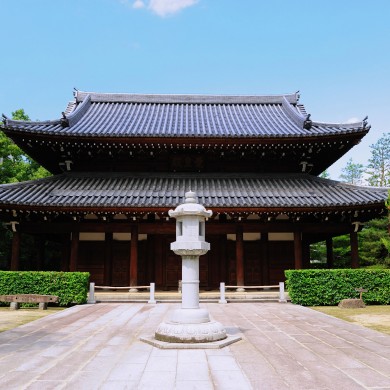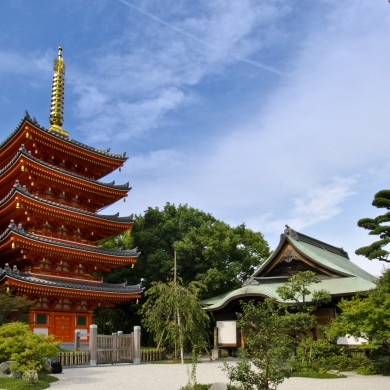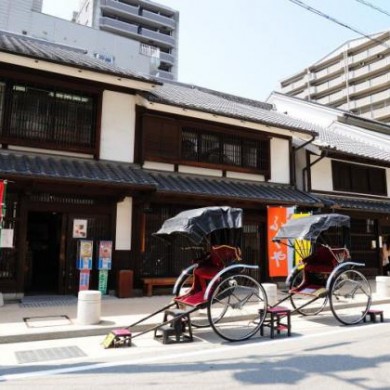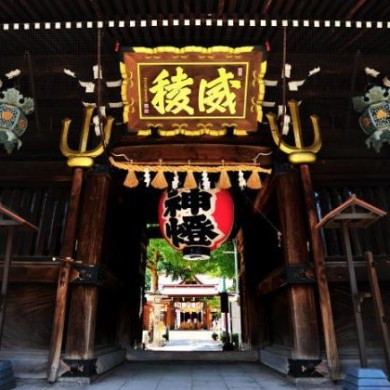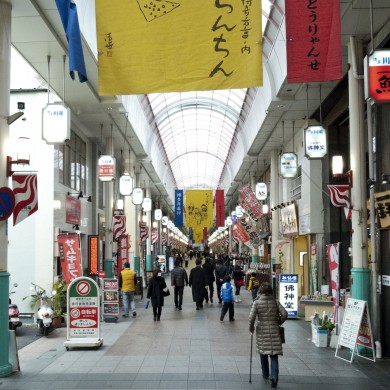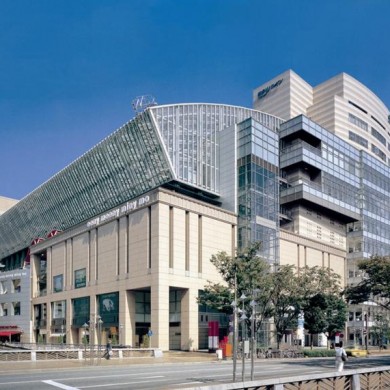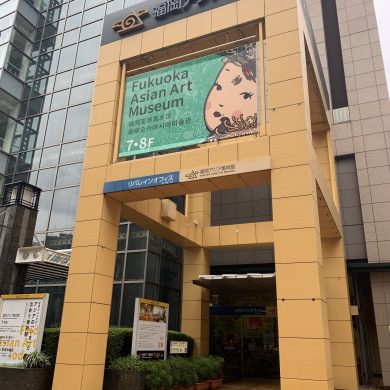Our Experience of Being Guided on "The Traditional and Modern Art of Hakata Tour"!
2018.05.18As I listened to the guide’s careful explanation, we could study Hakata’s traditions more deeply while experiencing its modern art on this tour, which we’ll introduce in this article.
Our gathering place was at the gateway to Kyushu, Hakata Station’s Hakata Entrance.
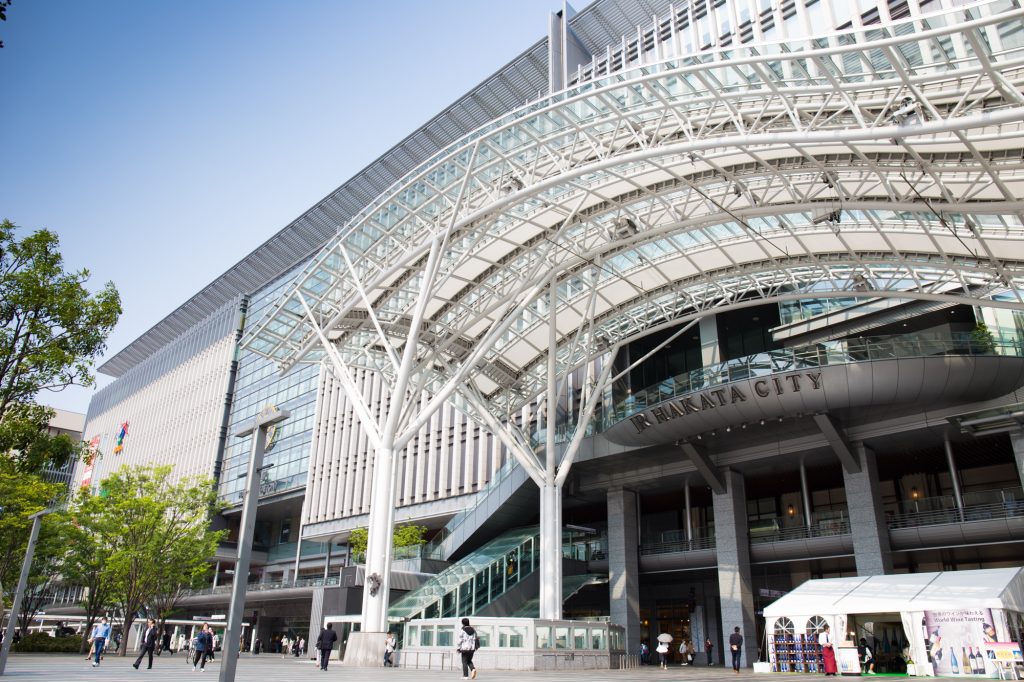
Right away, the guide told us about the art that is displayed in Hakata Station.
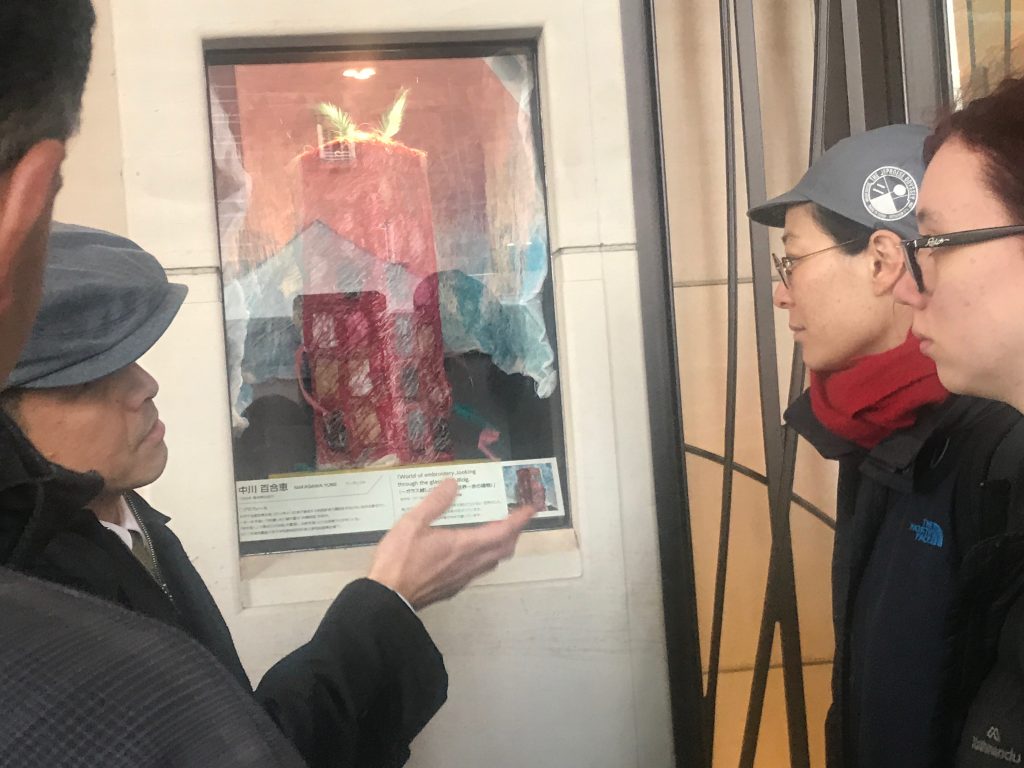
*Note: The art works on display change according to the season.
We even discovered a work of art at the Hakata Entrance!
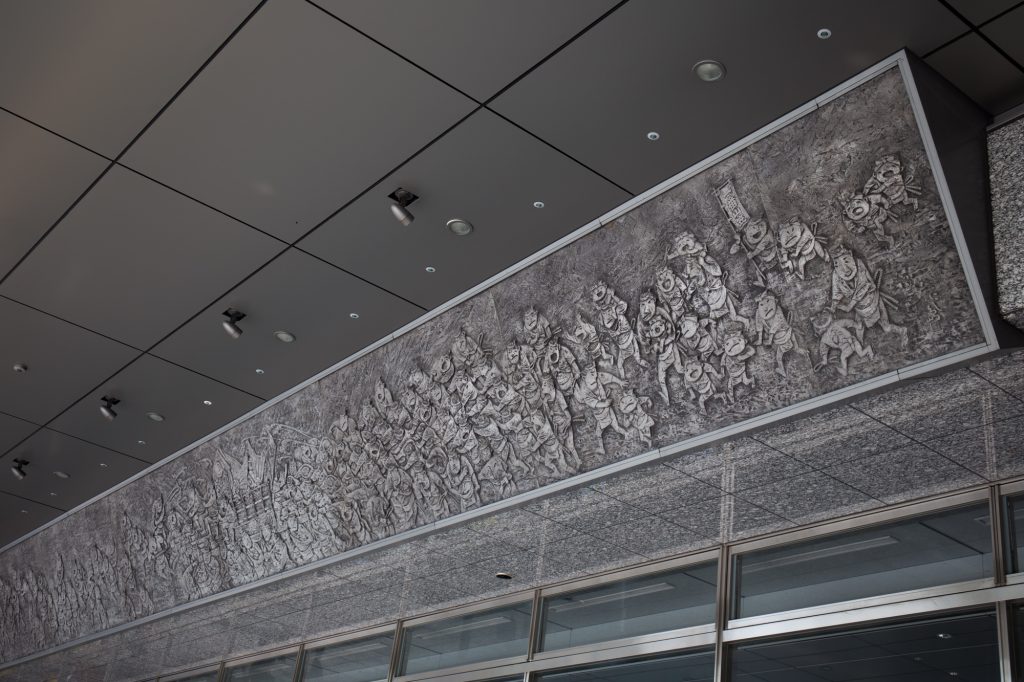
The relief that you can see above the entrance is a depiction of Hakata Gion Yamakasa, a festival that Hakata is proud to show the world. The guide told us about the origins and history of the Yamakasa floats.Next, we headed to Dekimachi Koen, a large park near Hakata Station.
Next, we headed to Dekimachi Koen, a large park near Hakata Station.
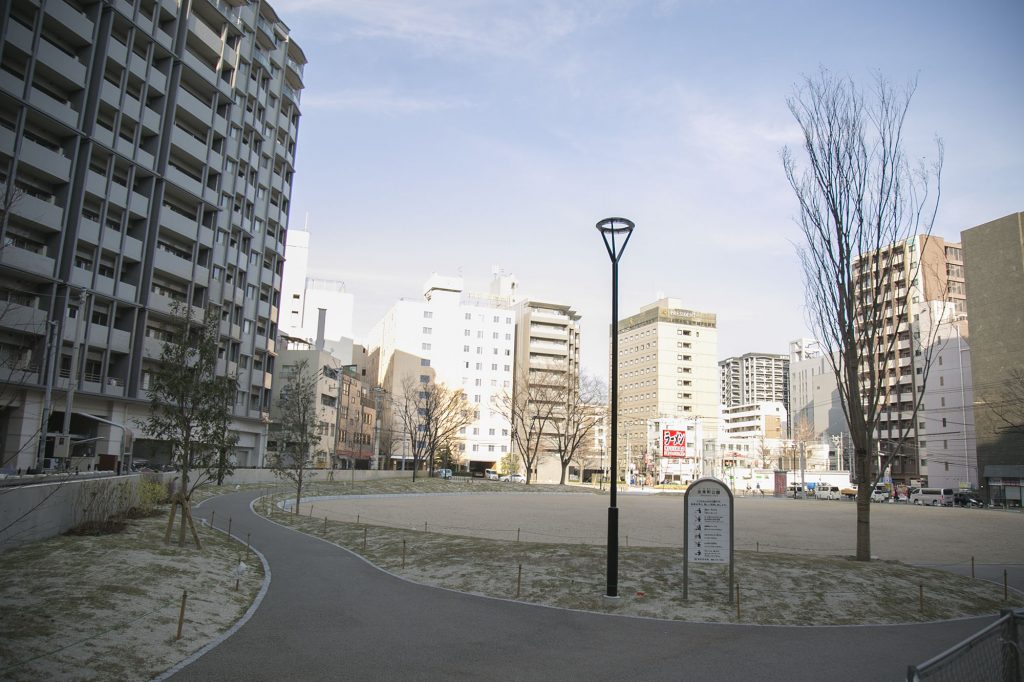
Since this place lies within the former Hakata Station grounds, there is a monument in the park marking the birthplace of Kyushu Railway.
In December of 2017, this park was renovated, becoming a new gate for Hakata.
A recreation facility is also scheduled to open here in April of 2019.
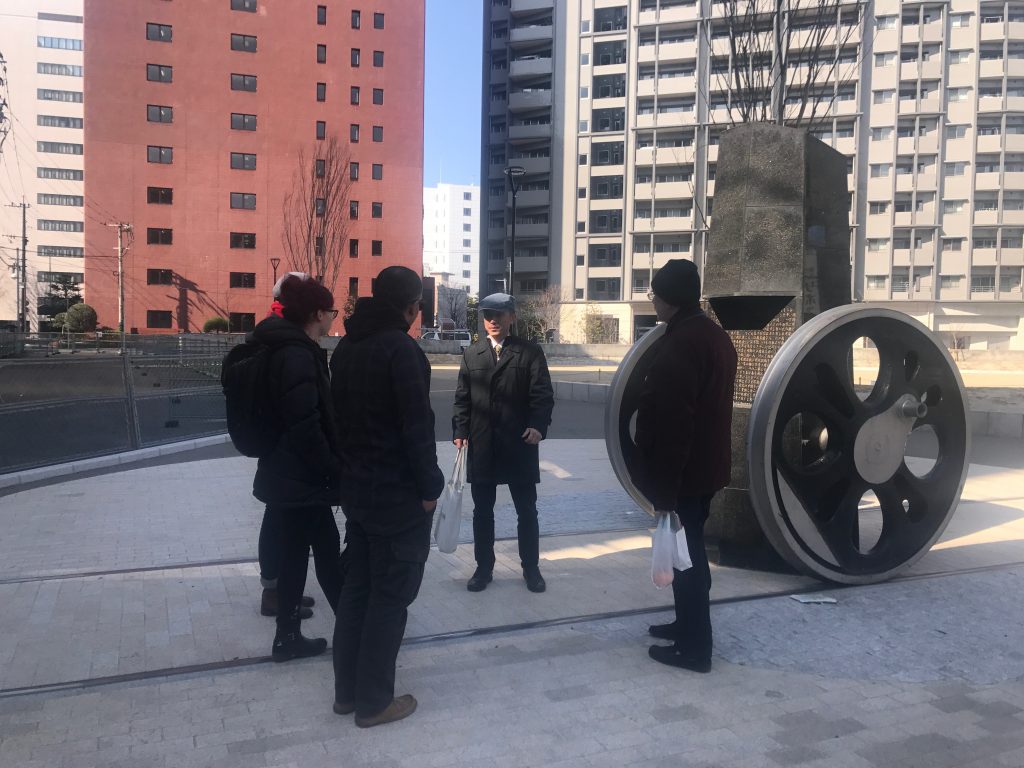
After that, we headed for Jotenji, a historical temple featuring all sorts of “auspicious origins”. With its dignified air, the calm atmosphere of this temple will make you forget the hustle and bustle of the surrounding city!
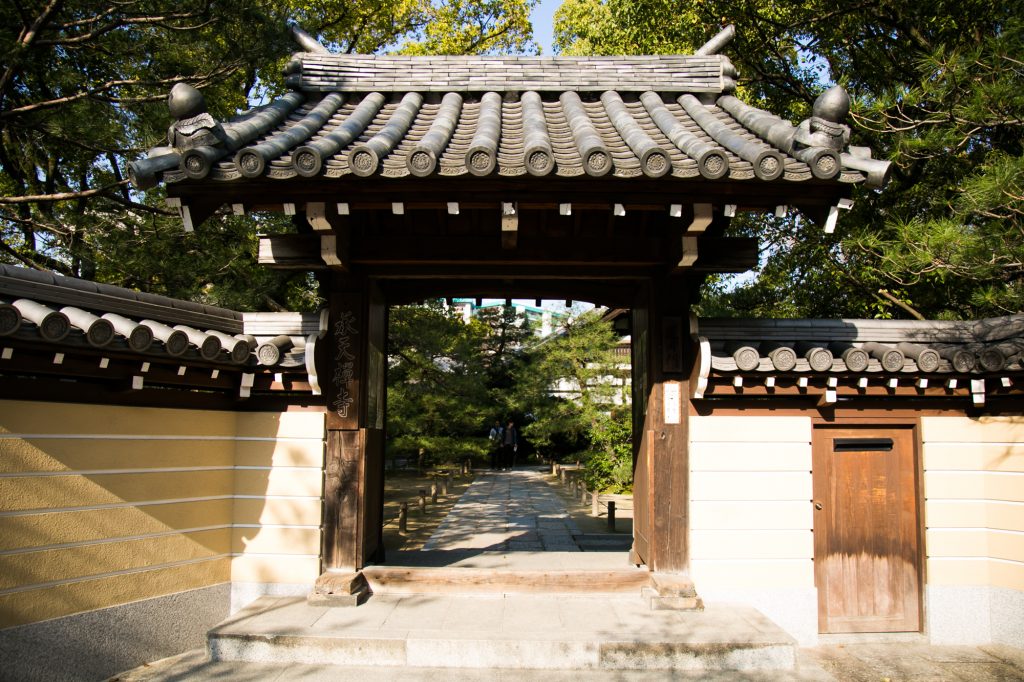
It is said that Japanese “powdered food culture” was first handed down here, as exemplified by udon and soba noodles as well as Yokan and Manju bean paste sweets. This is also the birthplace of Hakata-Ori, a traditional form of weaving that Japan is proud to show the world.
What’s more, this is where Hakata Gion Yamakasa, the festival representing Hakata, got its start.
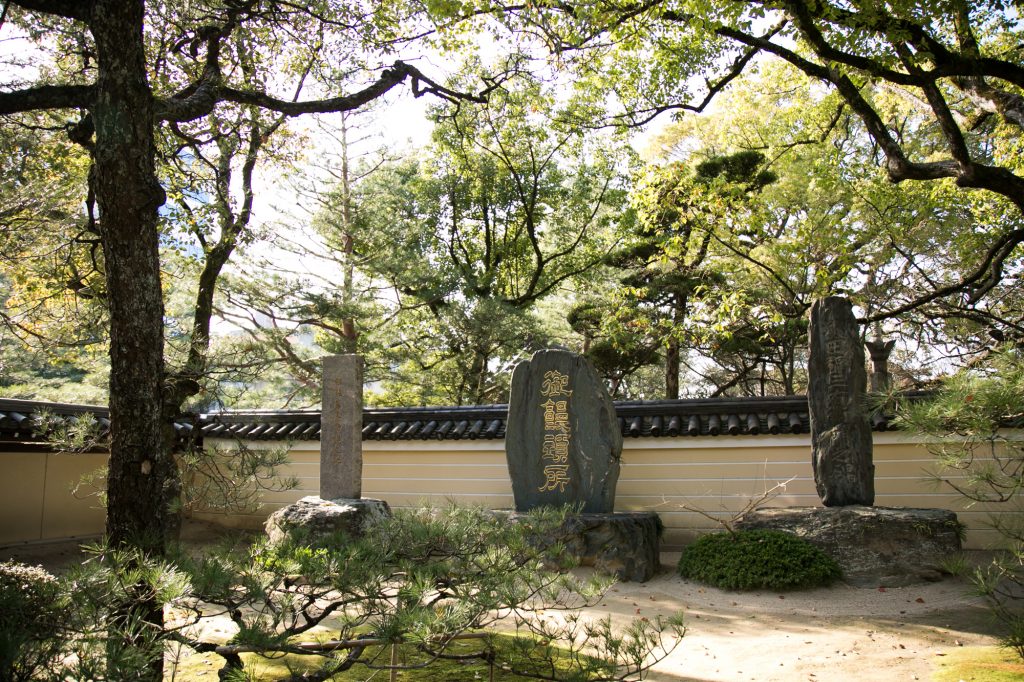
It’s thrilling to learn how much of Japan’s history started from this temple!
In addition to stone monuments recounting this history, this tour offers a special trip to a breathtakingly beautiful Japanese rock garden that is normally closed to the public! It may not be too much to say that it’s worth joining this tour just to see this rock garden!
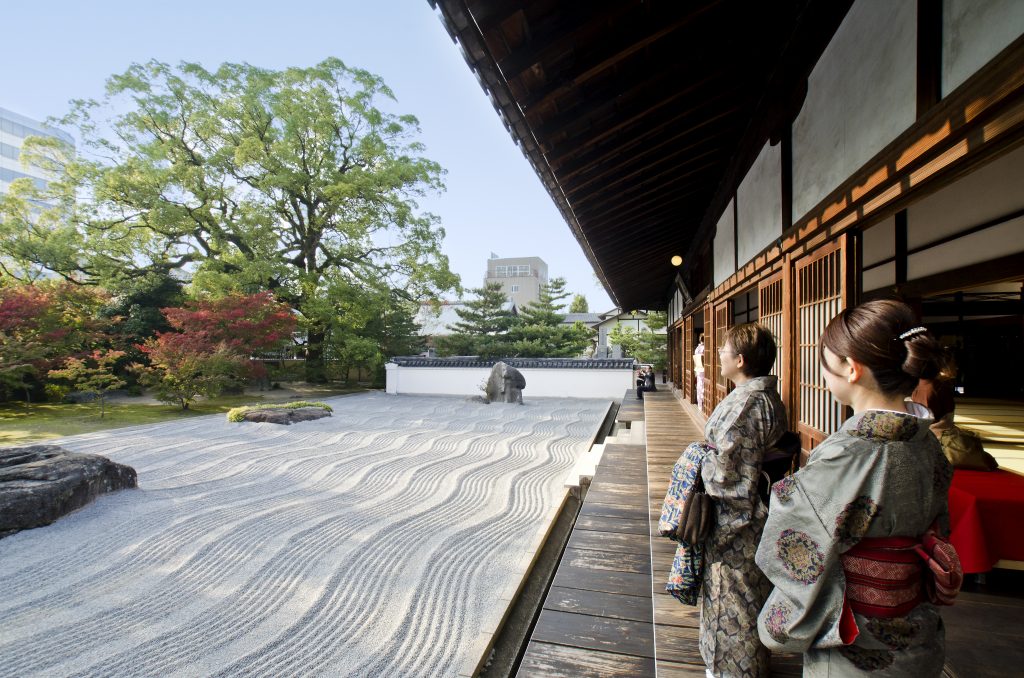
Jotenji Temple
Then, we moved on to Tochoji, the first temple founded by the famous Buddhist monk, Kukai.
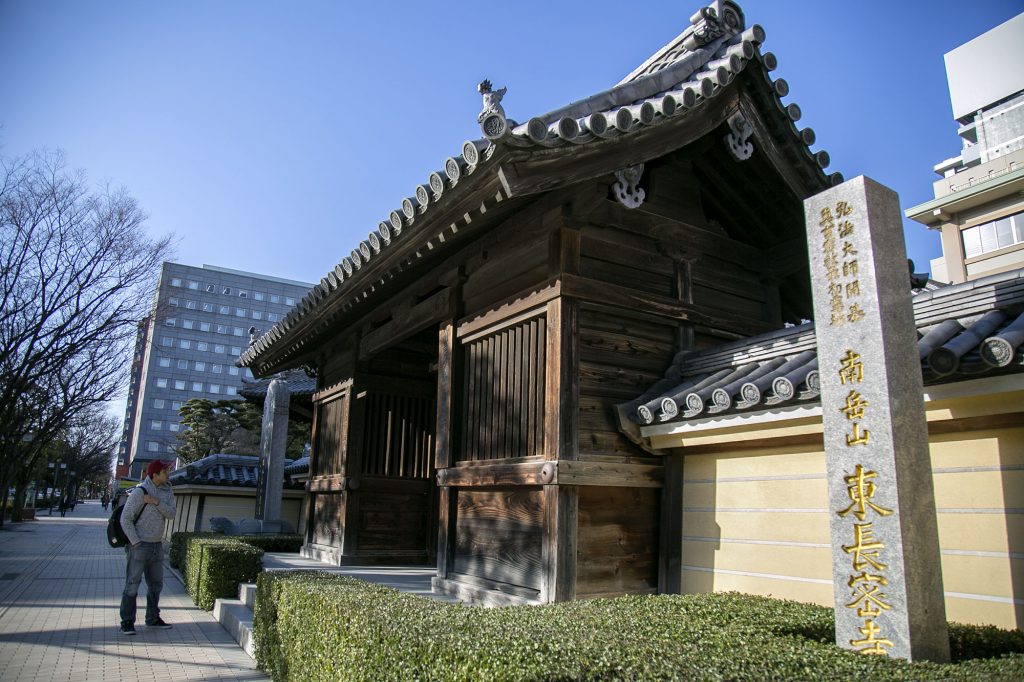
Inside the temple grounds, where a pagoda stands tall, surrounded by modern buildings, you can feel “past and present” at the same time.
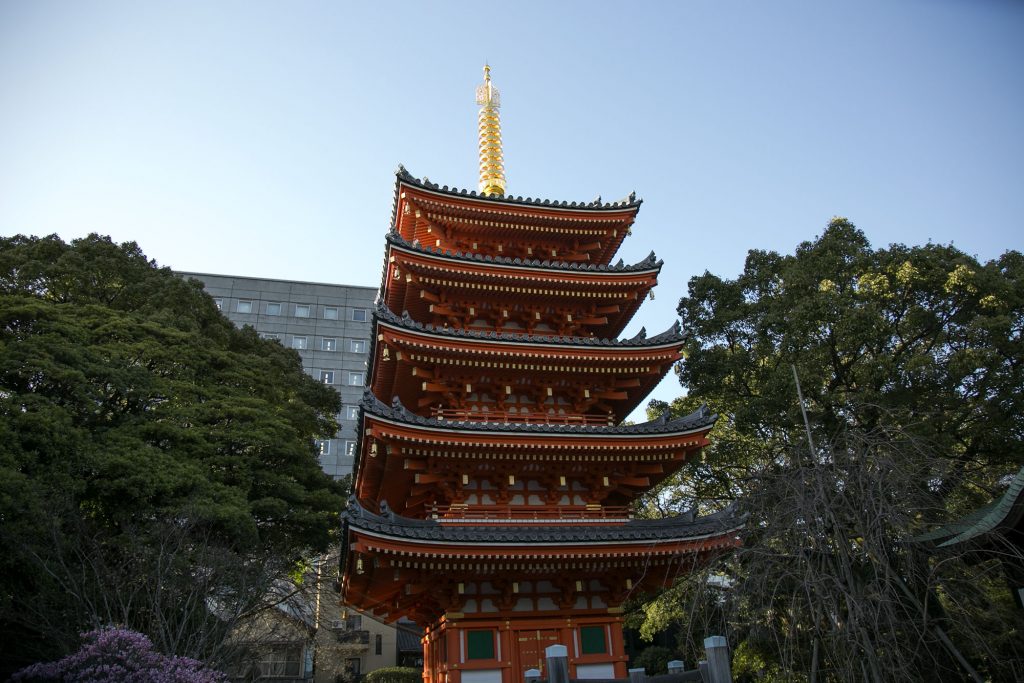
At the base of the grand seated statue of Fukuoka’s Great Buddha, there is a tunnel called “Heaven and Hell” where you can go inside and see the pictures of Jigoku-Hakkei, or “The Eight Views of Hell”. Unfortunately, I couldn’t take any photos inside the statue.
The experience of passing through a dark space to reach the light of “Heaven” felt a little like an amusement park attraction!
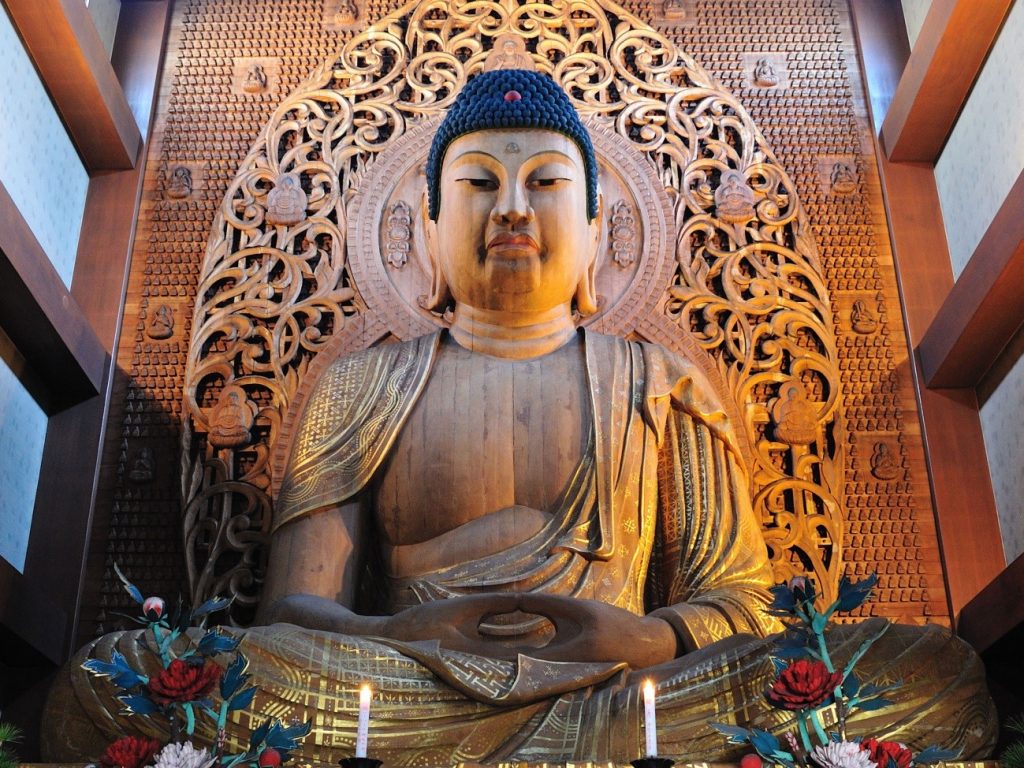
Listening to the guide’s careful explanation, we could deepen our knowledge of Hakata’s history and learn how to enjoy Tochoji Temple, so it was a productive way to spend time.
Tochoji Temple
Following our visit to Tochoji, while taking our time listening to the guide’s explanation, we advanced up the path leading through a stone Torii gate to Kushida Shrine.
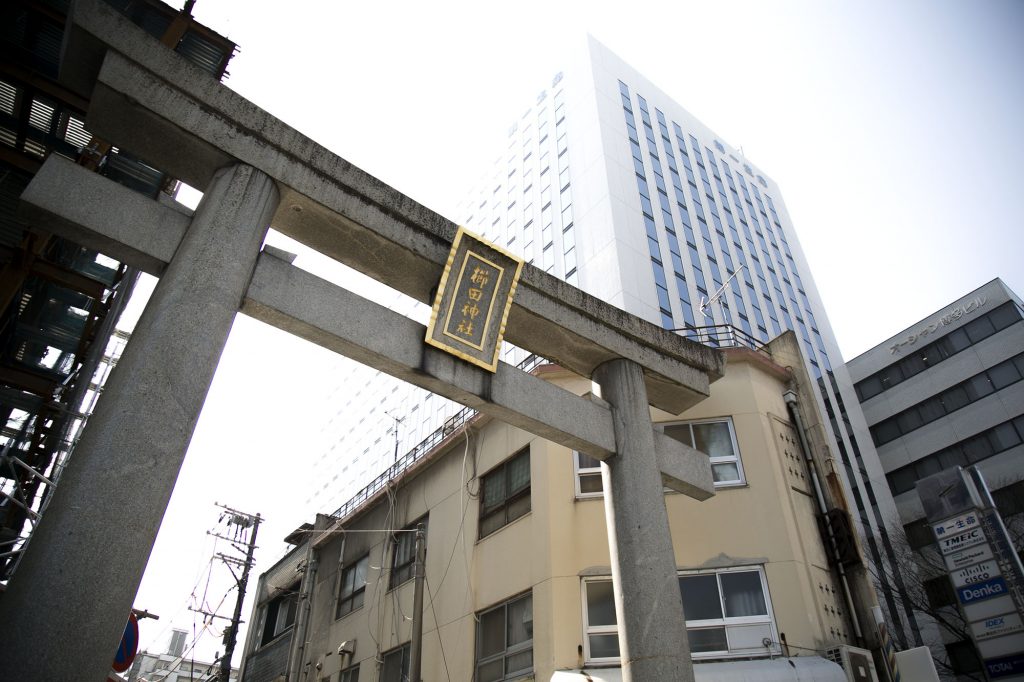
Walking along, we came across Kashima Honkan. As the first ryokan to be registered as a National Tangible Cultural Asset by the Japanese government, this well-established hotel overflows with the romance of the Taisho Period (1912-1926). Feel the history of this ryokan, which welcomes many overseas tourists. Wouldn’t you like to stay there yourself?
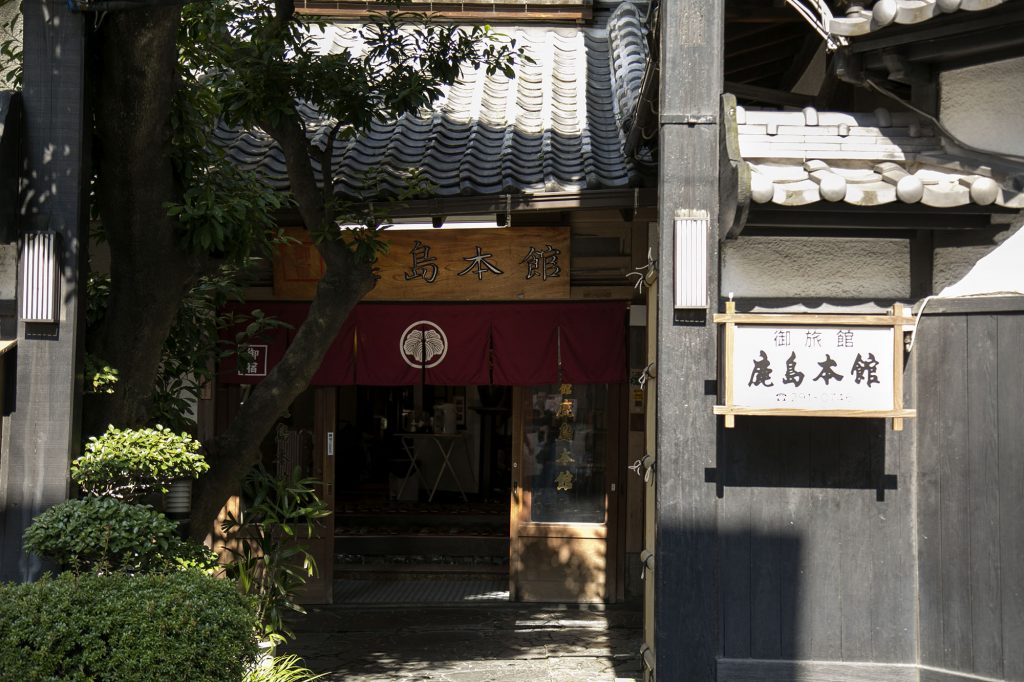
Address/3-11 Reisen-Machi, Hakata-Ku, Fukuoka
Access/2 minutes on foot from Gion Subway Station
URL/http://kashimahonkan.jp/
Continuing along Kushida-Sando, the path leading to Kushida Shrine, we approached one of the tourist attractions that represent Hakata: the Hakata Machiya Folk Museum.
Located across from Kushida Shrine, this facility introduces the lifestyles and cultures of Japan’s Meiji (1868-1911) and Taisho (1912-1926) Periods in an enjoyable way.
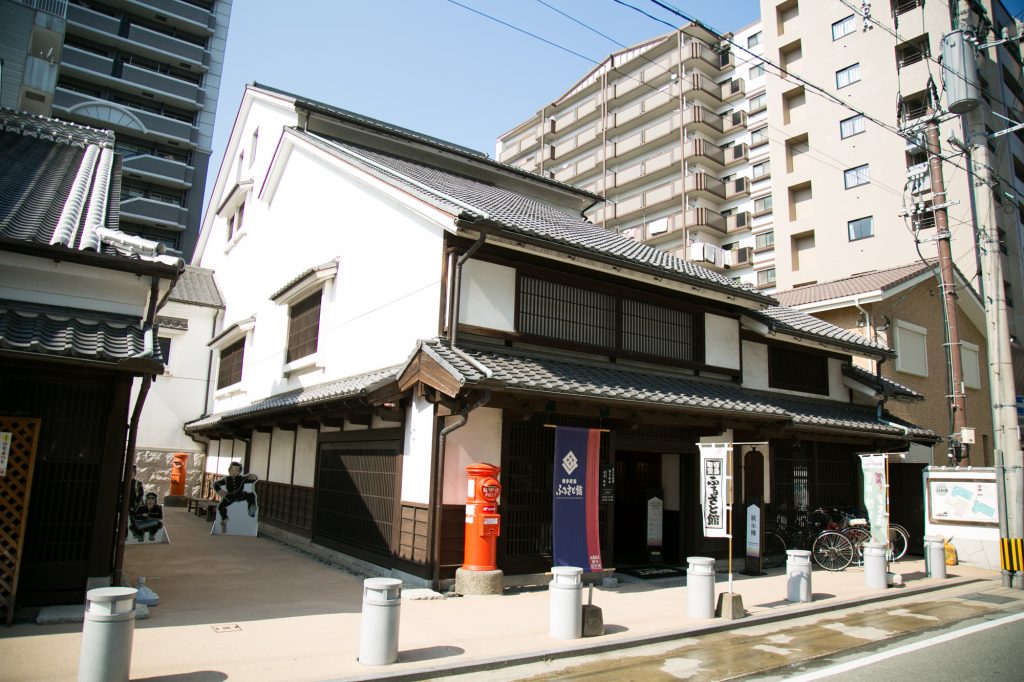
At the Hakata Machiya Folk Museum, we started with a video experience using VR (Virtual Reality), mainly about what a Machiya (merchant household) was like during the Meiji Period. Watching the VR, we could feel the full impact of the Hakata Gion Yamakasa festival. Then we took a lesson in the local dialect, Hakata-Ben, and we looked at all the items on display, such as miniature scenes depicting Hakata’s “good old days”!
Then it was time for a break. In the Teicha Taiken experience, we rested while drinking green tea and eating a sweet. It was so much fun to share our travel memories!
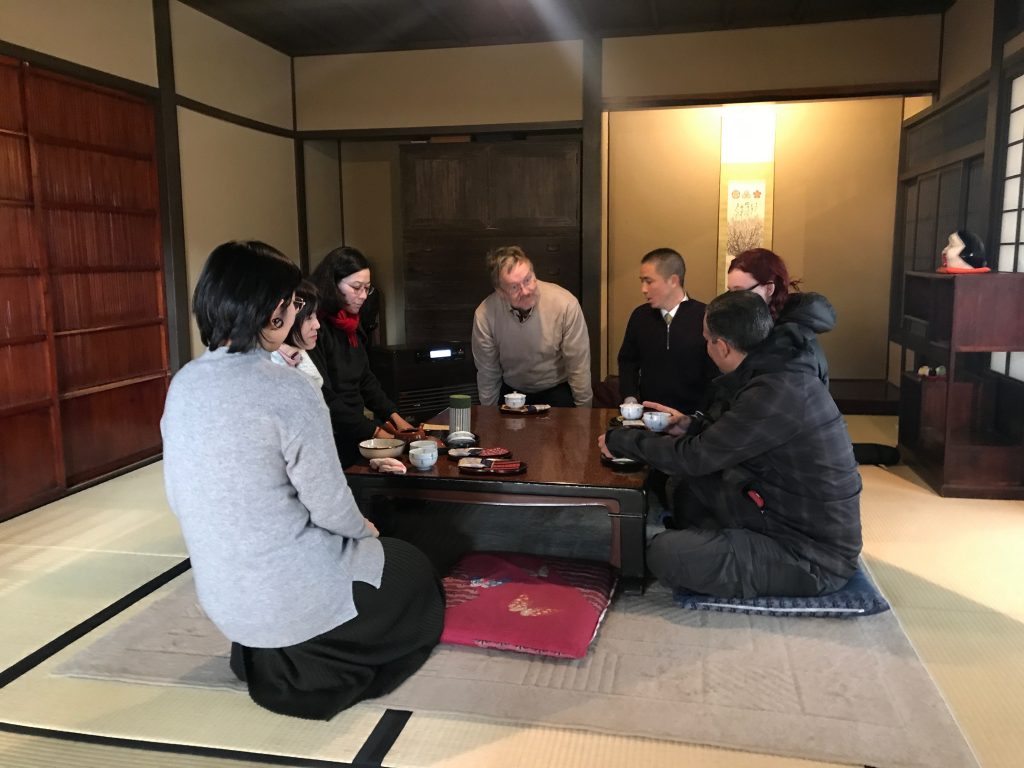
At the souvenir shop inside the building, there was a full lineup of gifts, from Hakata-Ori weaving and Hakata-Ningyo dolls, the traditional crafts that are the pride of Hakata, to the excellent sweets only available in Kyushu or Hakata.
*Note: Teicha means to make and serve tea to guests
Hakata Machiya Folk Museum
Next, we proceeded to Kushida Shrine, familiar to the locals as O-Kushida-San, housing the main Shinto deity of Hakata.
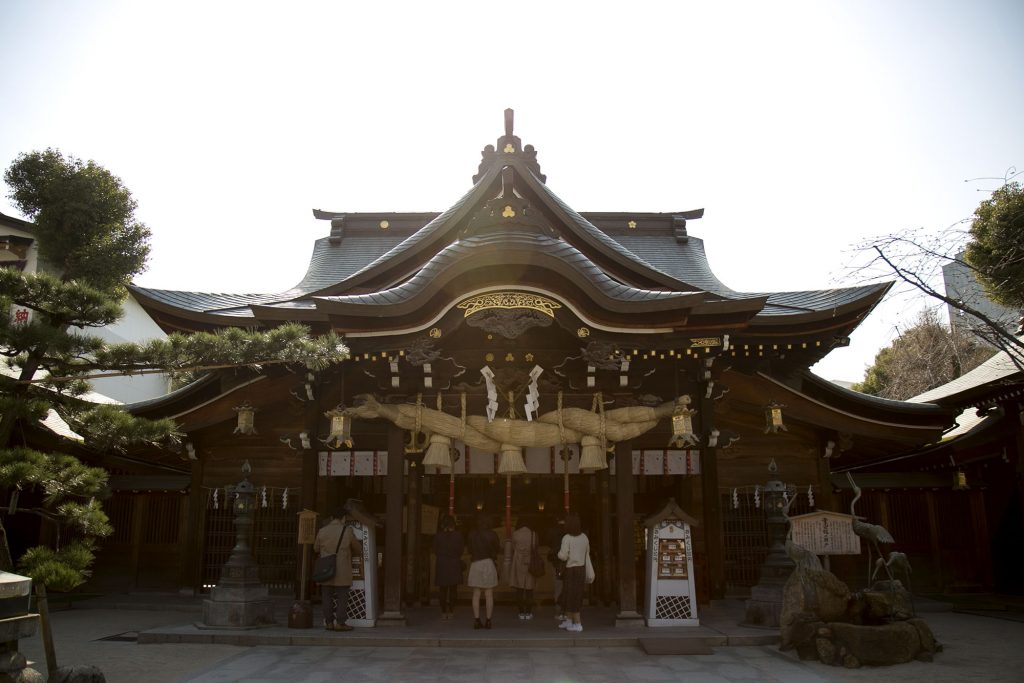
It is also known as the place where Oi-Yamakasa, the climax of the Hakata Gion Yamakasa festival, takes place. This festival is famous all over Japan as an event reminiscent of summer in Hakata.
Since the Hakata Gion Yamakasa is dedicated to this shrine, the decorated Yamakasa floats are on display year-round, so you’ll want to be sure and snap some photos!
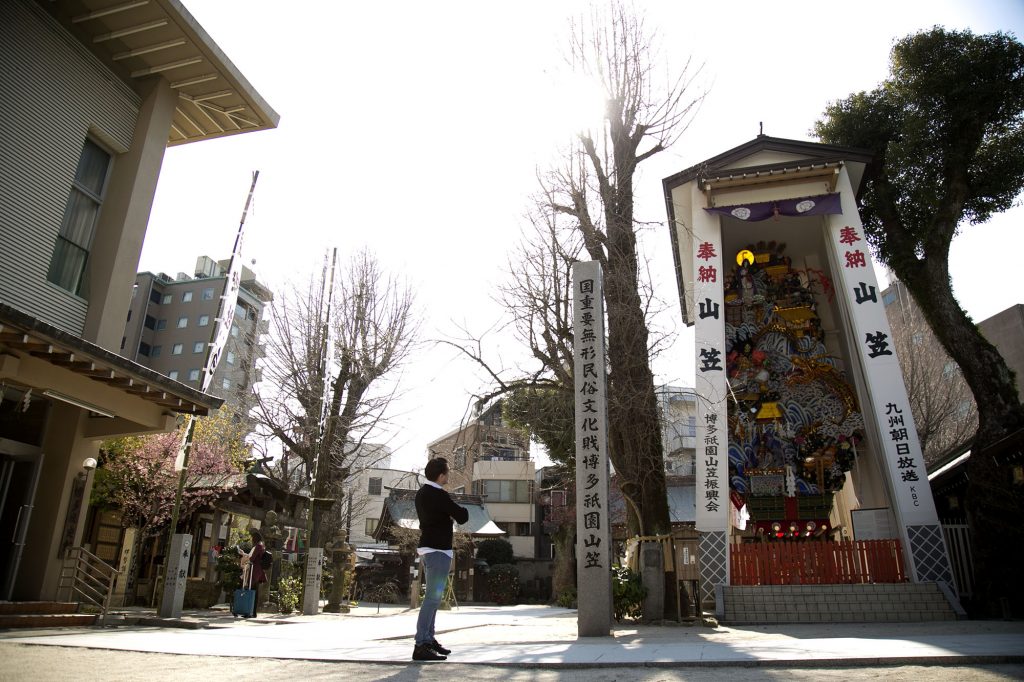
From the guide, we learned how to worship at the shrine and we heard about Omikuji paper fortunes. It’s rare to find multilingual paper fortunes in Japan, but you can get them here at Kushida Shrine!
Kushida Shrine
The next stop was at Nakasu-Kawabata Shotengai a well-loved shopping district in Hakata, characterized by its long arcade! With a history of over 130 years, spanning a total length of 400 meters, well-established businesses blend in with newer shops. A lot of tourists from abroad have visited this arcade to enjoy shopping and eating here.
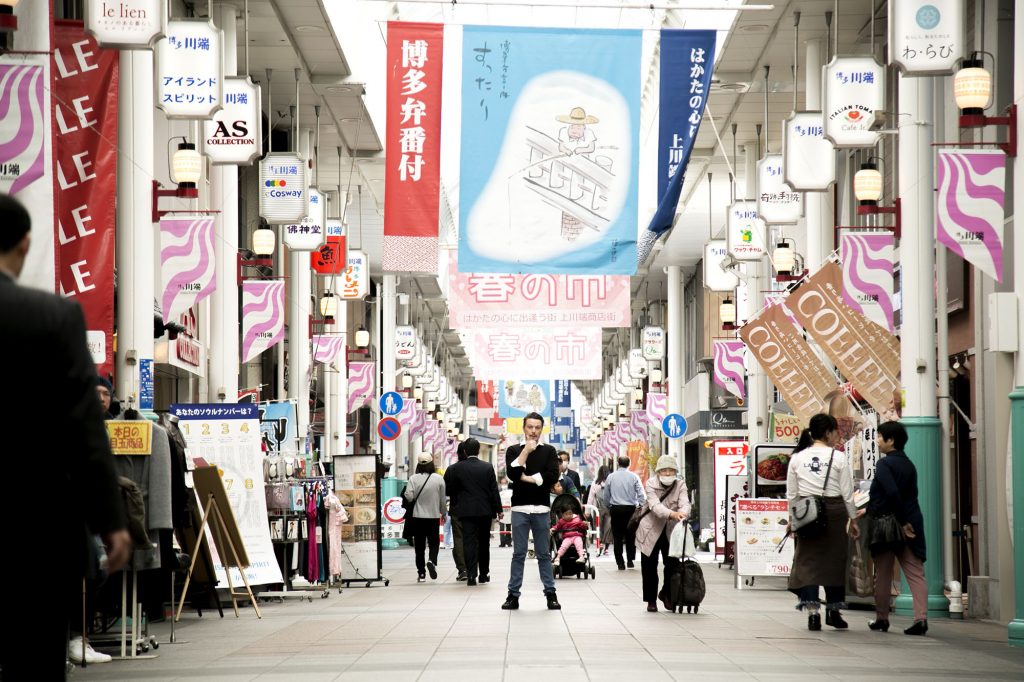
Kawabata Shopping Arcade
- Nakasu-Kawabata Area
Hakata’s oldest shopping street has about 130 shops lining a 400-meter long arcade. This is the standard Hakata walking course, featuring gift shops selling traditional Hakata ningyo dolls and other items, shops specialized in Yamakasa goods, stores that offer products from the Genkai-nada sea, and…
After strolling through the arcade, we headed for Reizenso, Fukuoka’s artist colony. Housed in a vintage building, this group puts into practice the principle of “Building Stock Activity”, where those who value people, towns and culture gather to cherish and preserve the old buildings of Fukuoka.
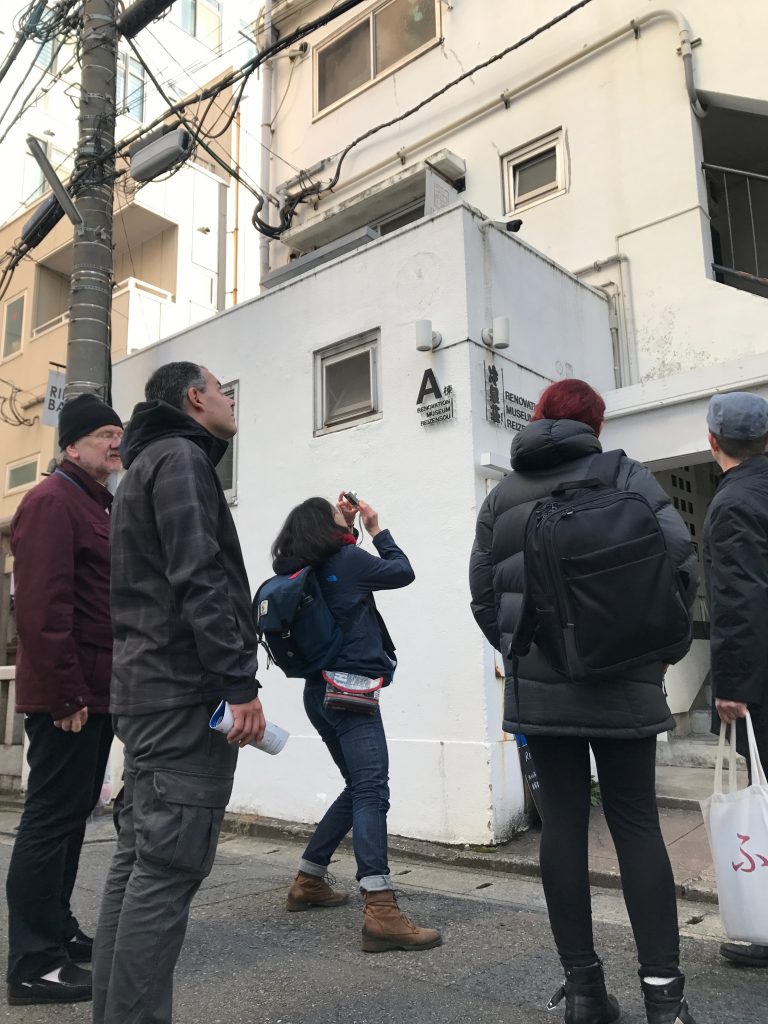
Address/9-35 Kami-Kawabata-Machi, Hakata-Ku, Fukuoka
Access/5 minutes on foot from Nakasu-Kawabata Station
Then we went to We Base HAKATA, where we could take a look at modern art. At the entrance, an impressive cat greeted us!
While We Base is a hotel where tourists gather, it’s also a place where visitors can enjoy works by Fukuoka artists in the lobby.
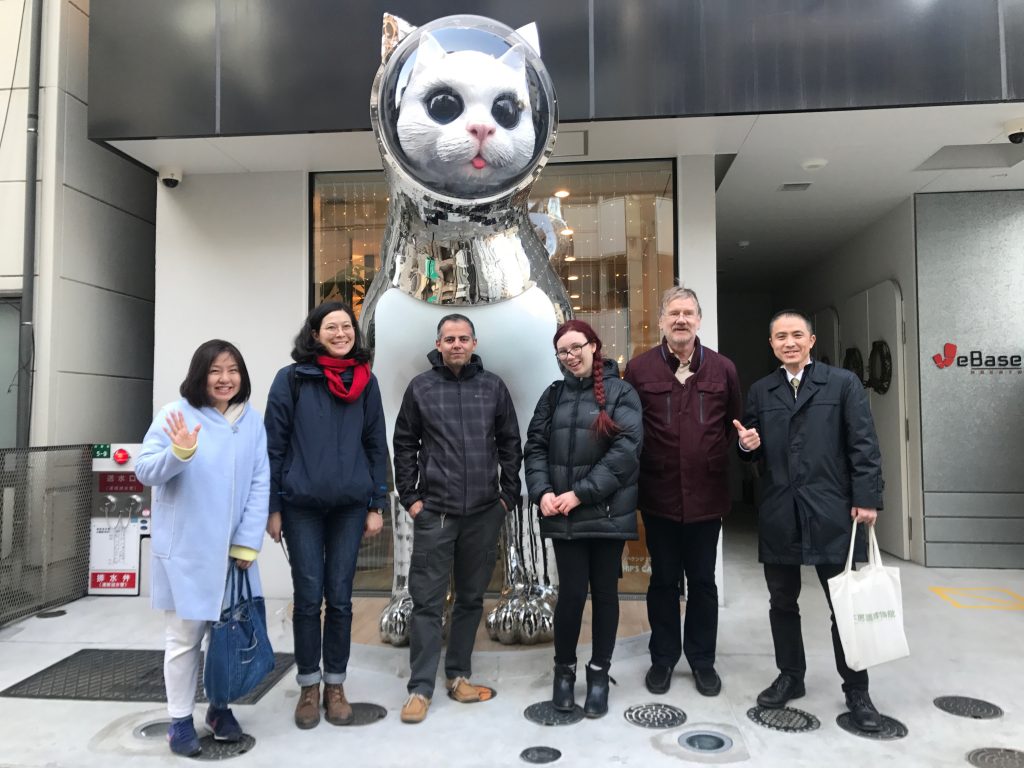
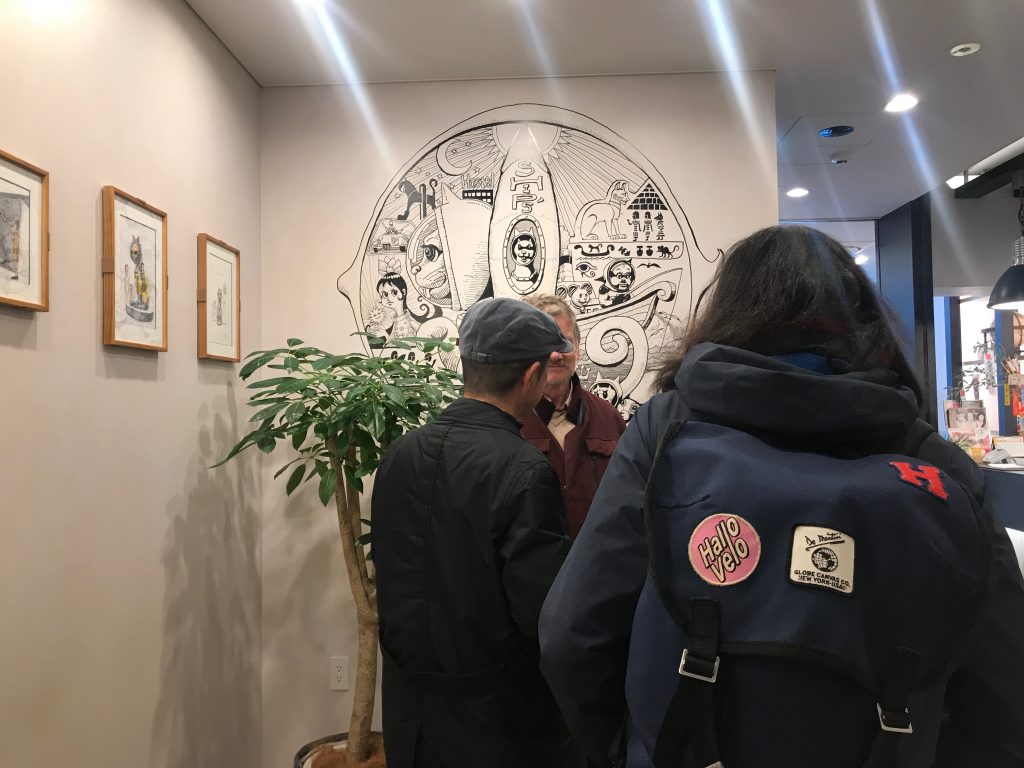
Address/5-9 Tenya-Machi, Hakata-Ku, Tokyo
Access/3 minutes on foot from Nakasu-Kawabata Subway Station
URL/http://we-base.jp/hakata/?lang=en
The following stop on our tour was Hakata Riverain, a multipurpose facility towering over the banks of the Hakata River. Among the attractions gathered here are gourmet food, lodging, shopping, art and theater performances.
We could observe a wide variety of public art works here.
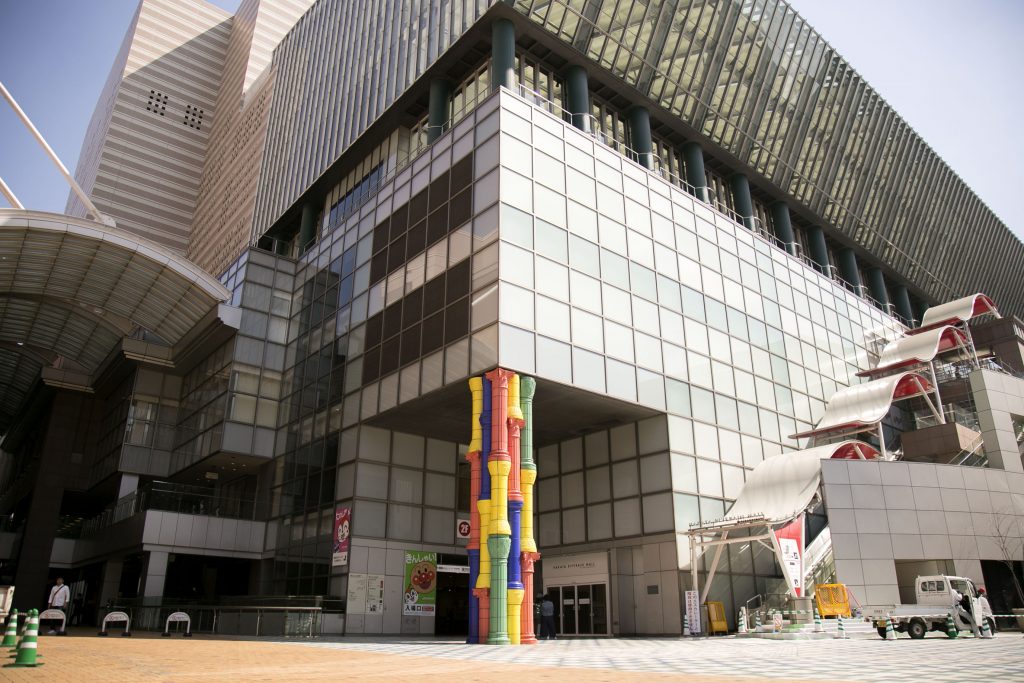
With its kanji (Chinese character) design, the bridge connecting Hakata Riverain and the Hotel Okura has a Japanese feel.
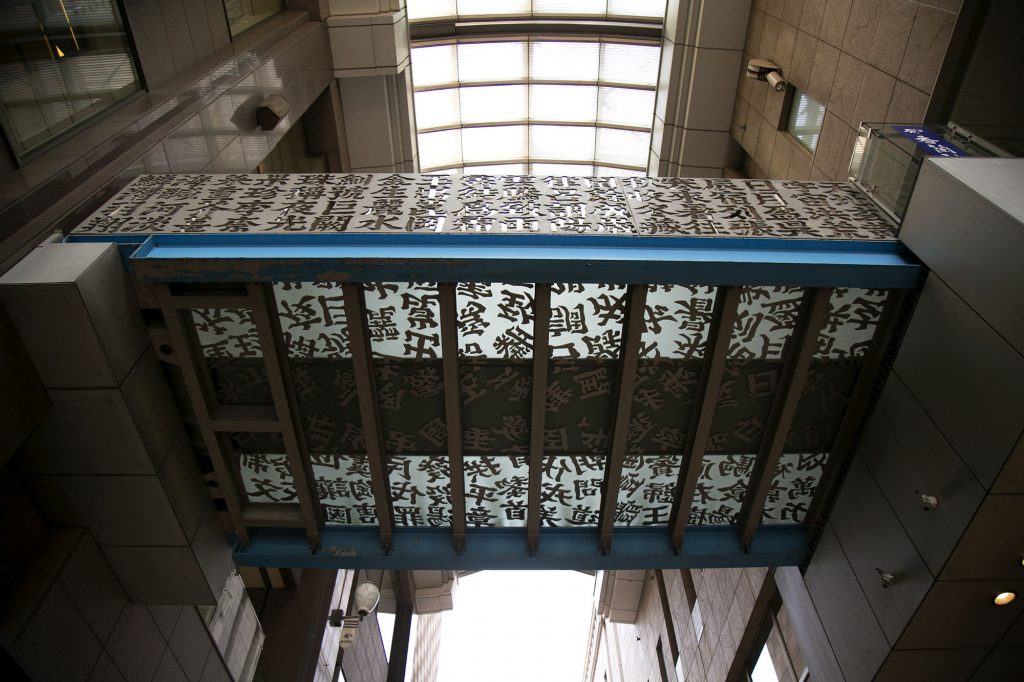
The dragon at Hakata-Za theater also boasts a unique presence!
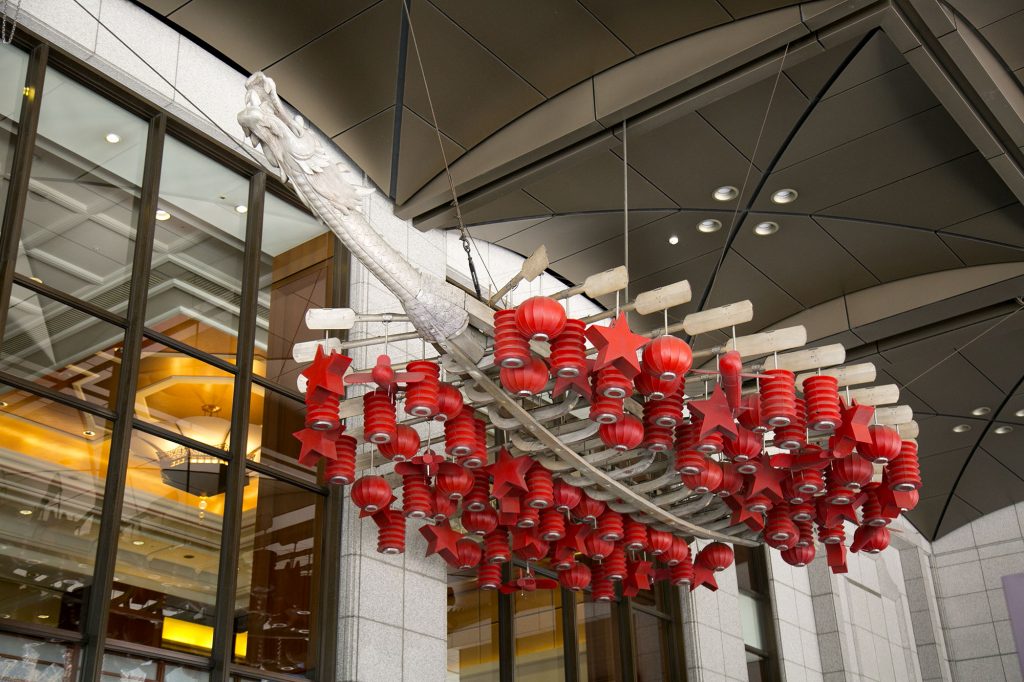
HAKATA RIVERAIN MALL by TAKASHIMAYA
Finally, we headed for the Fukuoka Asian Art Museum, located inside Hakata Riverain.
This is the only art museum in the world which systematically collects modern works of art from Asia.
Over 2,900 works of art, from 23 countries and regions around Asia, are stored and exhibited here.
On the 7th floor, a new Art Cafe has opened. Approximately 10,000 books and magazines about Asian Art are gathered here, as the final destination for sightseeing and excursions regarding the culture of Hakata’s Old Town.
Why not take the time to relax and unwind in this comfortable space?
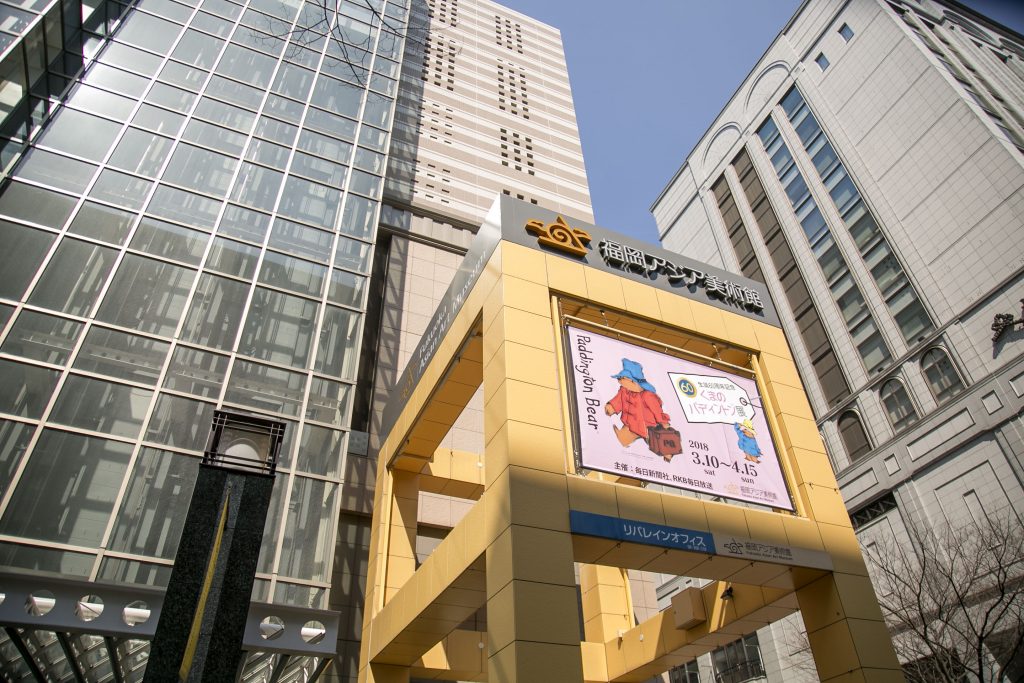
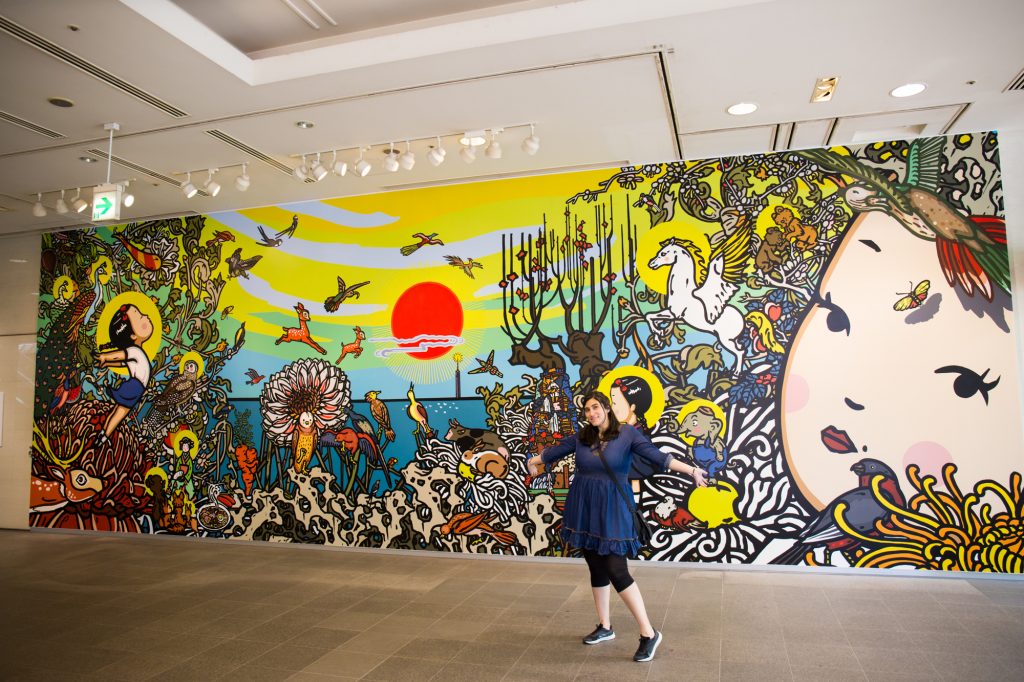
Fukuoka Asian Art Museum
From historical temples offering an oasis in the middle of the bustling city, to places featuring a variety of modern art works, we could appreciate the broad range of art here!
Listening to the guide, who carefully explained each location in a way that was easy to understand, made it even more enjoyable. By posing questions and entering a place not open to the public, it felt very special indeed!
Compared to yesterday, we felt like a more well-informed person. By learning the history and coming into contact with modern art, I could experience the excitement and energy, as well as the pleasant comfort, of Hakata and Fukuoka!
Here are the details of the tour we took this time!
https://suito.inboundhub.jp/en/experiences/20
